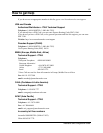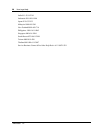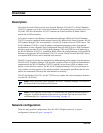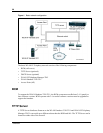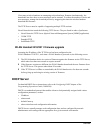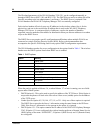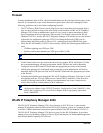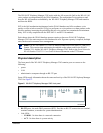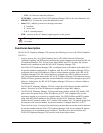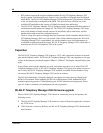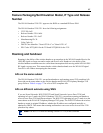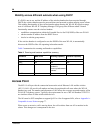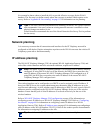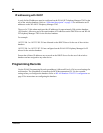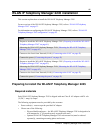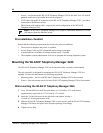
35
Overview
— COL - lit if there are network collisions
• NETWORK - connects the WLAN IP Telephony Manager 2245 to the wired Ethernet LAN
• ERROR LED - lit when the system has detected an error
• Status LED - indicate system error messages and status
— 1 - heartbeat
— 2 - active calls
— 3, 4, 5 - currently unused
• PWR - connects to the AC adapter supplying power to the system
Functional description
The WLAN IP Telephony Manager 2245 provides the following services to the WLAN Handsets
2210/2211:
• It acts as a proxy for every WLAN handset; that is, all Unified Networks IP Stimulus
(UNIStim) signaling and RTP media to and from the wireless handset pass through the WLAN
IP Telephony Manager 2245. Except for the initial DHCP and TFTP sessions, the wireless
handsets only communicate with the WLAN IP Telephony Manager 2245.
Each WLAN IP Telephony Manager 2245 is configured with an IP address with which all of
the wireless handsets communicate. In addition, each WLAN IP Telephony Manager 2245 is
configured with a pool of IP addresses. When a wireless handset registers with a WLAN IP
Telephony Manager 2245, the wireless handset is assigned one of the IP addresses from the
pool. All communication between this WLAN IP Telephony Manager 2245 and other devices
(BCM, IP Phones, gateways, and other wireless handsets) is always done through its pool of IP
addresses. In this sense, the WLAN IP Telephony Manager 2245 acts as a Network Address
Translation (NAT).
The WLAN IP Telephony Manager 2245 has a single physical Ethernet interface and MAC
address. Therefore, all of the IP addresses are mapped to a single MAC address.
• The WLAN IP Telephony Manager 2245 tags and untags packets with the SVP header. SVP
packets have the protocol byte of the IP header set to 0x77. SVP-compliant APs use this
proprietary tagging to give priority to tagged packets. For UDP (UNIStim and RTP) packets
going from the wireless handset to the network, the WLAN IP Telephony Manager 2245
replaces the SVP protocol number, 0x77, with the UDP number, 0x11. For packets going from
the network to the wireless handset, the protocol number is changed from 0x11 to 0x77.
There can be no Layer 3 routing in the path because packets that traverse the network between
the wireless handset and the WLAN IP Telephony Manager 2245 are not standard IP packets
(the packets use a non-standard protocol number). Therefore, the wireless handsets and
WLAN IP Telephony Managers 2245 must be in the same logical subnet.
Warning: Use only the provided Class II AC adapter with 24 volt (V) DC, 1 amp
(A) output.



